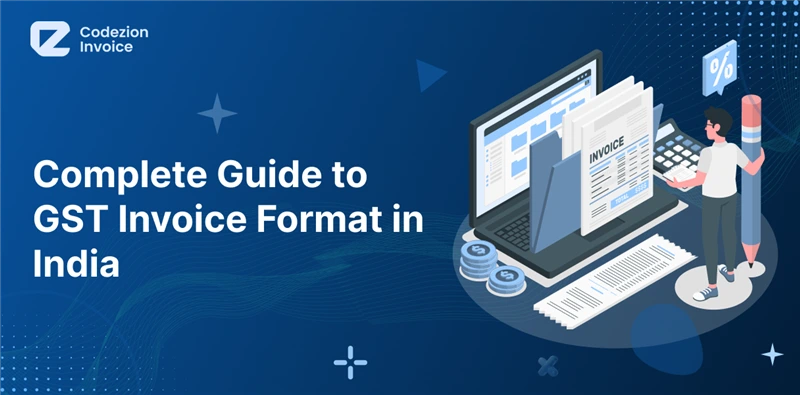
Understanding the GST invoice format is crucial for every business operating in India today. Since the implementation of the Goods and Services Tax system, maintaining proper documentation has become essential for compliance and smooth business operations. A well-structured GST invoice format not only ensures legal compliance but also helps businesses maintain accurate financial records.
The GST invoice format serves as the backbone of the entire taxation system, enabling businesses to claim input tax credits and maintain transparency in their transactions. When businesses use the correct tax invoice format, they can avoid penalties, ensure smooth audits, and build trust with their customers and tax authorities.
Every entrepreneur and business owner must familiarize themselves with the proper GST invoice format to streamline their operations. The significance of using the right format extends beyond mere compliance – it reflects professionalism and helps in building credible business relationships.
GST, or Goods and Services Tax, represents a comprehensive indirect tax system that replaced multiple existing taxes in India. This unified tax structure simplified the taxation process and brought transparency to the entire system. Understanding what is GST becomes essential when learning about proper invoicing procedures.
The GST system operates on the principle of "one nation, one tax," making it easier for businesses to operate across different states. When businesses understand the fundamentals of this tax system, they can better appreciate the importance of maintaining proper invoice formats.
Before diving into invoice formats, it's important to understand the different types of GST that apply to various transactions:
Understanding these types of GST helps businesses determine which taxes to include in their invoices and ensures accurate tax calculations.
A proper GST bill format must include specific mandatory elements to ensure compliance with tax regulations. These components form the foundation of every valid tax invoice and cannot be omitted under any circumstances.
Every GST invoice bill must contain the following mandatory information:
Different business scenarios require different types of invoices. Understanding these variations helps businesses choose the appropriate GST tax invoice format for their specific needs.
Creating an accurate GST invoice bill requires attention to detail and a systematic approach. Following a structured process ensures compliance and reduces errors.
Begin with company letterhead and clearly mention "Tax Invoice" at the top. Include the supplier's complete business details, including legal name, address, and GSTIN.
Assign a unique sequential number to each GST bill example and include the date of issue. Mention the place of supply, which determines the applicable tax type.
Add complete customer details, ensuring accuracy in name, address, and GSTIN. This information is crucial for the buyer's input tax credit claims.
List all items with proper descriptions, HSN/SAC codes, quantities, and rates. This section forms the core of any GST format example.
Calculate taxes accurately based on the place of supply and applicable rates. Show CGST, SGST, IGST, or UTGST as applicable.
Sum up all amounts and taxes to arrive at the total payable amount. Cross-verify calculations to avoid discrepancies.
Here's a simple GST bill format structure that businesses can follow:
HEADER SECTION
INVOICE DETAILS
BUYER DETAILS
PRODUCT/SERVICE DETAILS
TAX BREAKDOWN
FINAL AMOUNT

Many businesses make errors while preparing their GST bill example documents. Here are the most frequent mistakes:
Modern businesses benefit from using digital tools for creating and managing their invoice GST bill format. Digital systems reduce manual errors and ensure consistency across all documents.
Stay updated with changes in GST rules and modify the GST tax invoice format accordingly. Tax regulations can change, and businesses must adapt their documentation practices.
Maintain proper backups of all invoice documents as they're required for compliance and audit purposes. Digital storage with cloud backup ensures data security.
Modern businesses benefit from using digital tools for creating and managing their invoice GST bill format. Digital systems reduce manual errors and ensure consistency across all documents.
Design invoices that look professional and include all necessary branding elements while maintaining compliance with mandatory requirements.
Mastering the GST invoice format is essential for every business operating in India's current tax environment. From understanding the basic structure to implementing best practices, proper invoice management contributes significantly to business success and compliance.
The GST invoice format in India continues to evolve, and businesses must stay informed about changes and updates. By following the guidelines outlined in this comprehensive guide, businesses can ensure their invoicing practices remain compliant, professional, and efficient.
Remember that a well-designed GST bill format serves multiple purposes – legal compliance, professional image, and smooth business operations. Investing time in understanding and implementing proper invoice formats pays dividends in terms of reduced compliance issues and improved business relationships.
The GST invoice format is a standardized document structure that includes mandatory fields such as supplier and buyer details, GSTIN numbers, product descriptions with HSN/SAC codes, tax calculations, and total amounts. This format ensures compliance with GST regulations and enables proper tax credit claims.
GST rules mandate that every registered supplier must issue a tax invoice for taxable supplies. The invoice must contain specific information including GSTIN, invoice number, date, place of supply, description of goods/services, HSN/SAC codes, taxable value, tax rates, and tax amounts. Sequential numbering and timely issuance are also required.
To create a GST invoice, start with your business letterhead, add a "Tax Invoice" heading, include supplier and buyer details with GSTIN numbers, list products/services with HSN/SAC codes, calculate applicable taxes (CGST/SGST or IGST), and show the total amount. Use software or templates to ensure all mandatory fields are included and calculations are accurate.
Businesses obtain GST invoices from their suppliers for purchases made. As a buyer, ensure your supplier provides a proper tax invoice with all mandatory details including your GSTIN for claiming input tax credits. For your own sales, create invoices using accounting software or templates that comply with GST format requirements.